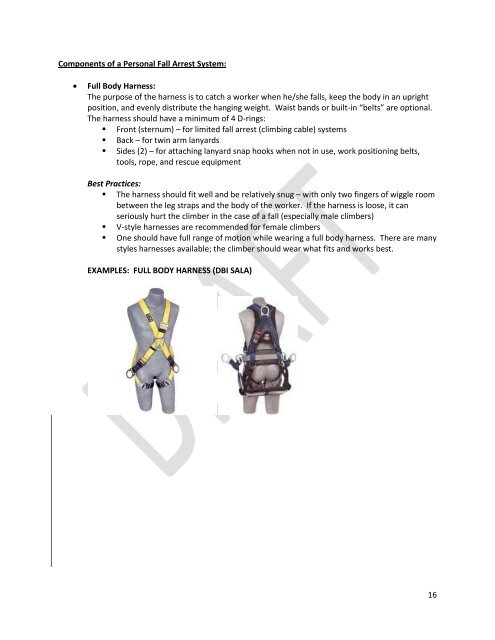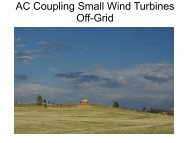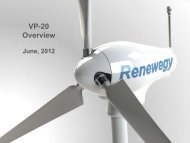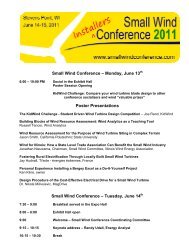Best Practices in Small Wind: Tower Climbing Safety
Best Practices in Small Wind: Tower Climbing Safety
Best Practices in Small Wind: Tower Climbing Safety
Create successful ePaper yourself
Turn your PDF publications into a flip-book with our unique Google optimized e-Paper software.
Components of a Personal Fall Arrest System:<br />
� Full Body Harness:<br />
The purpose of the harness is to catch a worker when he/she falls, keep the body <strong>in</strong> an upright<br />
position, and evenly distribute the hang<strong>in</strong>g weight. Waist bands or built-<strong>in</strong> “belts” are optional.<br />
The harness should have a m<strong>in</strong>imum of 4 D-r<strong>in</strong>gs:<br />
� Front (sternum) – for limited fall arrest (climb<strong>in</strong>g cable) systems<br />
� Back – for tw<strong>in</strong> arm lanyards<br />
� Sides (2) – for attach<strong>in</strong>g lanyard snap hooks when not <strong>in</strong> use, work position<strong>in</strong>g belts,<br />
tools, rope, and rescue equipment<br />
<strong>Best</strong> <strong>Practices</strong>:<br />
� The harness should fit well and be relatively snug – with only two f<strong>in</strong>gers of wiggle room<br />
between the leg straps and the body of the worker. If the harness is loose, it can<br />
seriously hurt the climber <strong>in</strong> the case of a fall (especially male climbers)<br />
� V-style harnesses are recommended for female climbers<br />
� One should have full range of motion while wear<strong>in</strong>g a full body harness. There are many<br />
styles harnesses available; the climber should wear what fits and works best.<br />
EXAMPLES: FULL BODY HARNESS (DBI SALA)<br />
16














